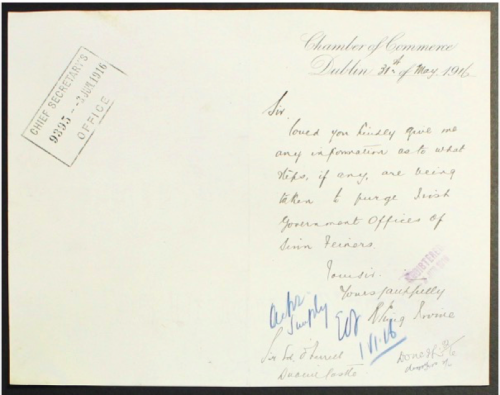This is a repost from the #Letters1916 tumblr for #DayofPH 2017. Sara Kerr describes the next stage of our workflow, transcribing a letter.
After the imaging of a letter has taken place, the letter is uploaded to the Letters of 1916 website transcription desk. During the upload process a form is completed providing a range of details about the letter, its sender and recipient, date, theme, and source. Each of these fields create Dublin Core metadata which allows the information about the letter to be read by computer and allows detailed searches of the letters to take place. You can read more about uploading on Hannah’s post, here.
Once on the letter is available on the transcription desk it is ready to be viewed and transcribed. The letters are very varied, there are personal, business and official letters. Letters may be typewritten or handwritten, and the quality of the handwriting can vary a great deal! The transcription desk itself provides a zoomable image of the text and a box below, in which the transcription can be typed. There is also a small toolbar which allows the transcriber to use some basic xml encoding – the xml encoding makes the letter readable by a computer and enables the text to be searched. The toolbar is made up of short cuts for commonly needed pieces of code, for example a button marked with a ‘?’ is used to show that the transcriber is unsure of a particular word. Highlighting the word and clicking on the ‘?’ will produce this piece of xml code <unclear>word </unclear>.
The letter above, from Robert King Irvine at the Dublin Chamber of Commerce to Edward O’Farrell at Dublin Castle, is one of the first I transcribed for the project.
